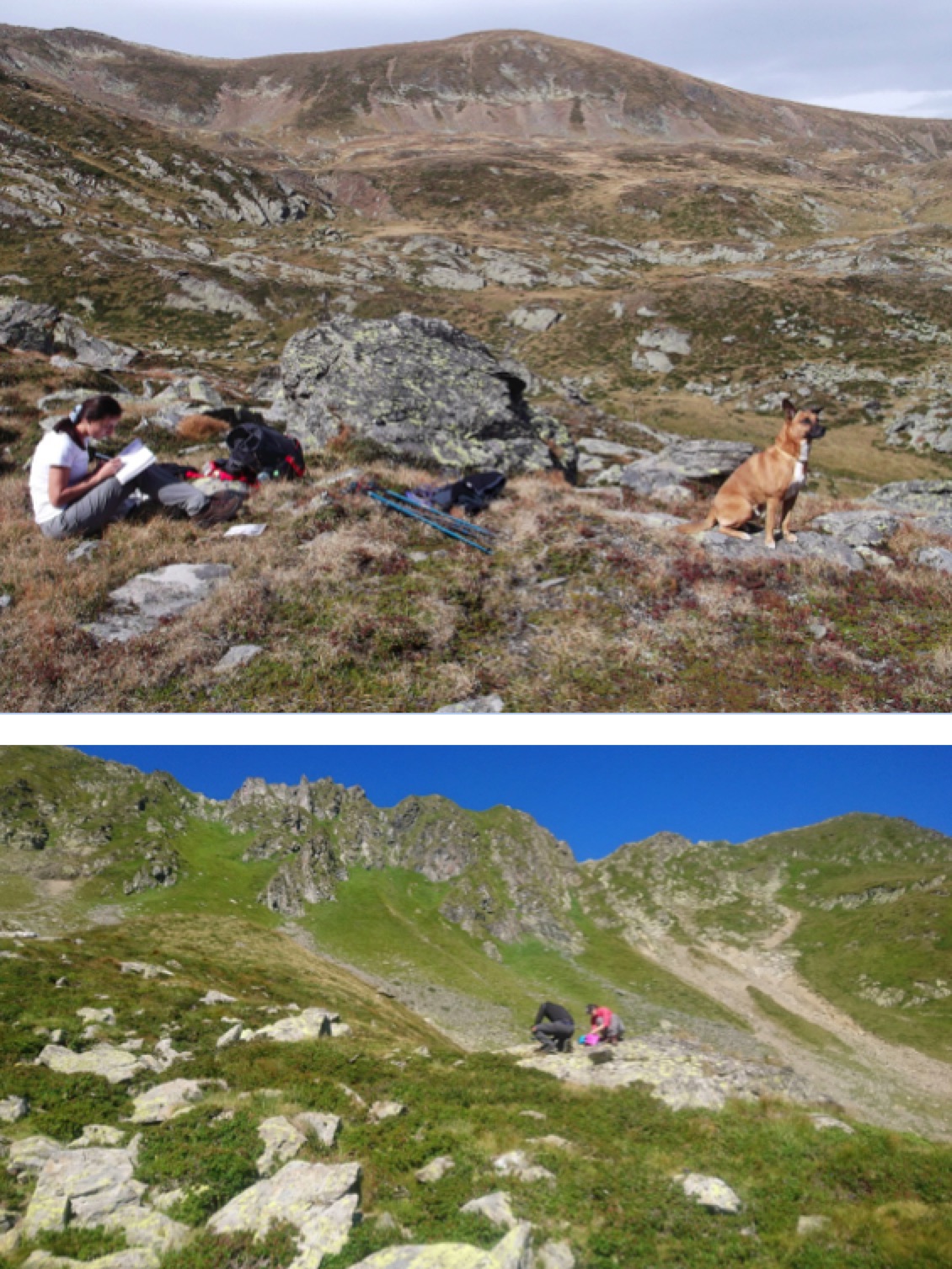Accelerator mass spectrometry

Geological studies
Responsible:: Mihaela Enăchescu, Daniela Pascal, Alexandru Petre, Cătălin Stan-Sion
By measuring the concentrations of radioisotopes produced by cosmic radiation in the Earth's crust, AMS can determine the age of rocks and their erosion rate, providing geologists with very accurate information useful in solving fundamental problems, with major implications for studying tectonic structures or detecting mineral reserves. or water.
Surface exposure dating (SED) is a technique that uses the cosmogenic concentration of nuclei produced in situ in minerals on the earth's surface, in order to date landforms and geomorphological processes [1]. Concentration, production rate, half-life of terrestrial cosmogenic nuclei (TCN - Terestrial Cosmogenic Nuclides) are used to date glacial landforms, landslides, age determination of river terraces, age of volcanic eruptions, elevation rates (on the alignment of horsts and grabens), erosion rates, etc. Rocks suitable for dating must have a rich quartz content. 10Be is not naturally found in quartz, it is produced in the atmosphere by neutrons resulting from washing reactions and then captured in the structure of quartz. 10Be is the most widely used radionuclide because it has a well-defined production rate and can be measured at extremely low concentrations, specific to the AMS technique.
Geologists / geographers use this technique to find out the age of exposure of eradic blocks or moraines to cosmic radiation. After the formation of the glacier, due to the erosion exerted by the glacier on the slopes, pieces of rock begin to detach, which are then embedded in the mass of the glacier, being transported downstream in a subglacial environment. Thus, by erosion, the layer in which cosmic radiation was accumulated until the moment of detachment is removed. After changing climatic conditions, the glacier will retreat, leaving in place forms of accumulation and erratic blocks that will be exposed to cosmic radiation. These forms of relief will be used to find out the age of exposure.
References:
[1] Cerling, T.E., Craig, H., Geomorphology and in-situ cosmogenic isotopes. Annual Reviews of Earth and Planetary Sciences 22, 273-317, 1994
[2] 2. Balco, G., Briner, J., Finkel, R.C., Rayburn, J.A., Ridge, J.C., Schaefer, J.M. 2009. Regional beryllium-10 production rate calibration for
late-glacial northeastern North America. Quaternary Geochronology 4, p.93–107.
Determination of actinides in environmental samples
Responsble: Mihaela Enăchescu, Alexandru Petre, Doru Păceşilă
The development of various nuclear technologies for energy production, nuclear waste treatment and the military industry, increases the risk of environmental contamination, accidental or not, with different amounts of anthropogenetic radioisotopes, such as plutonium, uranium, tritium. Accelerated Ion Mass Spectrometry attached to the 1MV linear tandetron accelerator in IFIN-HH, can determine isotopic ratios of actinides in environmental samples, such as 239Pu / 242Pu, 240Pu / 242Pu. The main radioisotopes of interest are those of plutonium, uranium and thorium. This requires the development of a methodology for the preparation and extraction of radioisotopes from environmental samples, a procedure for measuring environmental samples, standards and background using the AMS method, followed by a correct interpretation of the experimental results.
...
...
References:
[1] ..
[2]
Radiocarbon
Responsible: Andreea Dima, Oana Gâza, Elena Ispas, Maria Marin, Mirela Mihon, Doru Păceşilă
➢ Radiocarbon in archeology - the types of evidence that are the subject of dating in archeology are bone and sometimes wood or plant debris. For these types of samples the chemical processing methods are well developed, and additional requirements are mainly for the decrease of the sample mass that can be dated. This can be applied if AMS analysis of gaseous samples is implemented. Another direction of development generated by the large amount of data obtained so far is their processing by mathematical analysis (eg Bayesian type), a requirement that arose from archaeologists and will be addressed in the next period.
➢ Radiocarbon in environmental studies - environmental studies require a large number of samples to build sedimentary chronologies that highlight climate change in the Quaternary, Holocene and Anthropocene. Information on paleofauna, paleoflora, paleoclimatics, etc. is then placed on the temporary structure obtained through ages 14C, through archaeozoological analyzes, pollen, stable isotopes, etc.
➢ Radiocarbon in cultural heritage - now, the falsification of works of art in the cultural heritage, enhanced by the tools of the digital age, has become an industry in the true sense of the word, damaging the image and reputation of museums and art dealers presenting or selling these goods. inducing inherent doubts. In this context, the general objective is to design a laboratory protocol dedicated to assessing the falsification of works of art and develop a laboratory demonstrator validated for their authentication, by corroborating the results obtained through a set of advanced instrumental techniques with stylistic analysis provided by experts in works of art. the art.
For more details please see the dedicated website Radiocarbon or contact us.